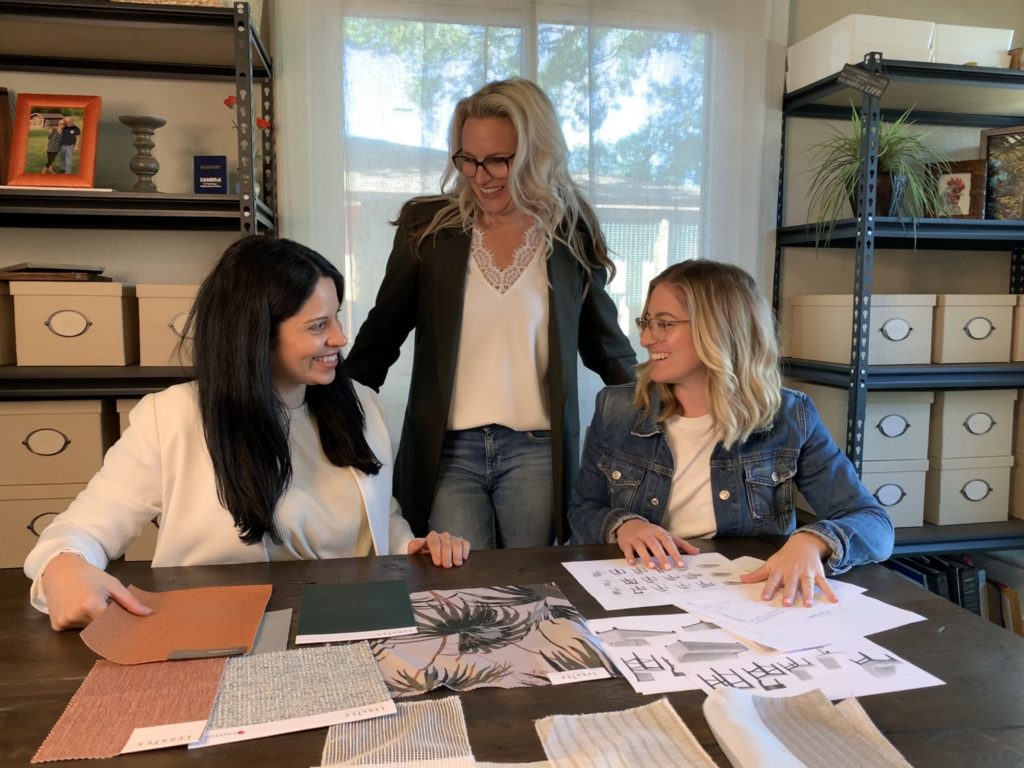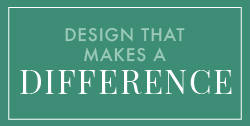Over the past two years, remote work has gone from experimental idea to hot topic to workplace norm. While the pandemic pushed companies of all sizes to work from home, JAI had pulled the trigger on remote work before the days of quarantine.
When deciding to go fully remote, I reached out to trusted mentors who had walked this path before me. Speaking with them, I quickly realized this was a step JAI should take. I would gain the ability to hire from the talented pool of hospitality designers around the country, each of whom would bring their regional inspiration and ideas. My team would receive the gifts of time and flexibility, allowing them to create a balance between work and home life. And then, there was the proven research that teleworkers have higher productivity, performance, and engagement rates.
With this information, I knew JAI would operate with higher efficiency and more focused project hours, positively affecting each client’s bottom line. The benefits to my team and the clients we serve were overwhelming. So, we leaped into the world of remote work.
But that was over two years ago. How’s it going now?
The Truth About Remote Work
I recently had a conversation with JAI Senior Designers Christina Kirkpatrick and Jenn Lindner to discuss the impacts of working remotely, the challenges and successes they have found, and what advice they would offer anyone thinking about adopting the remote work lifestyle.

Jenn: For me, adapting to remote work was easy. I have found that my workday is similar to being in the office. But the most significant benefit has been the flexibility in my schedule. I can conduct my day without the stress of when work needs to start or stop.
Christina: I agree. I find that being remote is far more efficient. I can balance the demands of motherhood and self-care while still working a full-time job far better than I could while having to commute to an office daily. Gaining that time has been so valuable.
Jacki: It makes me happy to hear that this structure is working for you. My hope with this transition was for each of you to have a healthy work/life balance that would offer the freedom to do your best work.
Christina: Yeah, and I have definitely noticed I have greater focus overall. With fewer interruptions from casual conversations or impromptu meetings, I can really focus on the task at hand. But I do miss office chit-chat.
Jenn: Me too. It was great to be able to walk into a teammate’s office to collaborate or just talk, but there is something to be said about having fewer interruptions.
Christina: Plus, it’s been beneficial to have the ability to change work locations, especially when I am feeling uninspired. I think a downside to working from home is that there is less inspiration from external factors. So, if I’m in a funk, I just get up and head somewhere else to work for a few hours.
Jenn: Confession: I like working in pajamas, so being home is fine with me *laughs*. But there are definitely days where I am lacking inspiration and really need to talk it out. I’ve found that the best thing to do is jump on a Zoom call. It’s the best alternative to recreate that quick in-person office designer chat.
Jacki: It sounds like even though we are all missing that physical, in-person connection, you are all finding effective ways to communicate. What has worked the best for you?
Christina: With internal communication, I think the transition has been almost seamless. It’s been easy to share files, thoughts, and project progress digitally. We’re equipped with the necessary tools and programs to easily communicate and share imagery quickly or ask teammates questions as if they were sitting right next to you.
I have to say, in some ways, being remote has made me a more effective communicator. I’ve found that I can describe matters more concisely and identify ideas that need discussion much faster than before. I think we all value and respect our teammates’ time more than ever now too.
Jacki: I think you’re absolutely right. How and when we communicate is more intentional now. It’s different from just being able to swing your chair around and share every detailed thought. We really have to explain thoughts and ideas clearly. What about you, Jenn? What has worked for you when communicating with the team?
Jenn: For me, I’ll usually send a picture of a hand sketch with scribbled notes on it, bring it up on a shared screen, and then call a teammate to talk it through. Again, using Zoom.
Jacki: We have leveraged the Zoom call. But you’re right; it’s the perfect way to collaborate.
Jenn: Honestly, that would be my advice to anyone in a remote work environment or thinking about it— learn to love and embrace the Zoom call.
Jacki: I love it! Zoom has become our best friend. But you did bring up a great question. Christina, what advice would you give to creatives when it comes to effectively communicating with remote co-workers?
Christina: Be transparent, speak up, and don’t worry about sharing imperfect imagery for internal conversations. To quickly get my ideas across, I share screenshots, snips, and messy markups all the time. It works, and it’s fast. I don’t focus on the file format, layout, or how it’s sent.
Jacki: I think that’s important for people to know. Our internal communication is different from what’s presented to the client, so sharing messy sketches or random thoughts within the team is perfectly acceptable. That’s how we enhance an idea and make it better.
Alright, I have one last question. It’s the most important one— How have you designed your office workspace?
Jenn: I was hoping you would ask that! I like to stare at the fabrics and finishes of a project I’m working on from my desk. You never know when a design idea is going to strike! Next to my computer, I have a large layout table where I keep everything organized.
Christina: You know me. I keep my desk clear of clutter. It is a designated space for work-related items only. I keep a countertop clear for layout space and a pin-up board for inspirational or current items. I have a plant on my desk, and my desk faces two large windows. Lots of natural daylight makes me happy and keeps my circadian rhythm on track.
Jacki: Your workspaces are beautiful reflections of each of you! I appreciate you both so much, and I hope you have found success with the shift to remote work. For me, it’s my goal to see my team grow and thrive. Hopefully, this working lifestyle will help you continue doing just that, both professionally and personally.
Design That Makes A Difference
Making this transition has been overwhelmingly beneficial for the JAI team. We have found success adjusting to new styles of communication, learning how to design across the team digitally, and discovering the many ways this work style positively impacts our clients. As a team, we always aspire to do work we believe in and love. We genuinely desire to make a difference in our design because we care about how spaces make people feel when they experience them. As we continue to advance in our remote work journey, we remain inspired by the opportunity to share our passion for Design that Makes a Difference.



